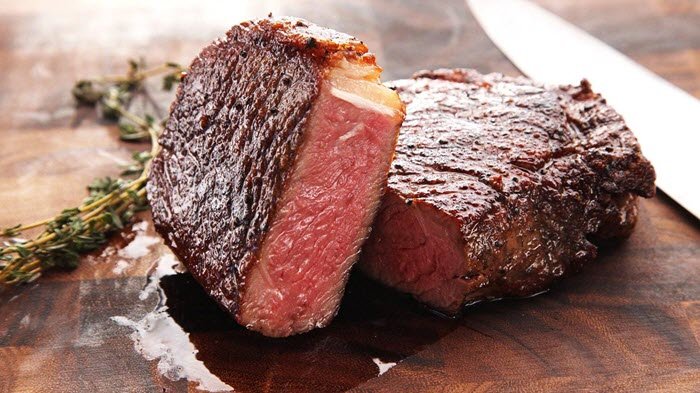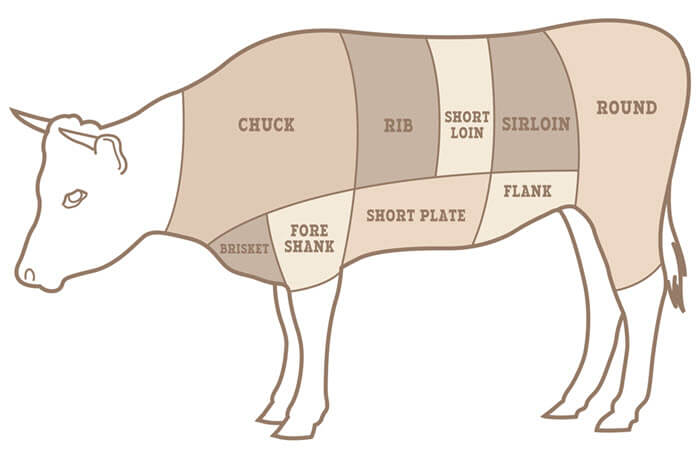Most of us enjoy the juicy taste of a nice cut of steak, but few people are familiar with its rich history.
Where do steaks come from, and how did we start incorporating them into our diets?
The truth is that steaks became an integral part of the human diet several centuries ago and have remained a popular dish worldwide due to their high nutritional value, culinary versatility, and delicious flavor.
Table Of Contents
When Was Steak Invented? What Country?
Though we don’t know exactly when steak was invented, we know this style of meat has been around for a long time.
There are a few theories about how it came to be so popular, but most will trace its beginnings to Italy.
Norse and Italian Roots
The term steak dates back to the mid 15th century in Scandinavia. The Norse word steik was first used to describe a thick slice of meat, particularly from an animal’s hindquarters.
While the word steak may have Norse roots, many attribute Italy as the birthplace of steaks as we know them today. More specifically, the city of Florence is credited with starting the tradition of cooking steaks at large gatherings.
The story begins on August 10th during the Medici era. In a Florentine Piazza, Lords were enjoying a celebration to pay homage to Patron Saint Lorenzo. People gathered around a bonfire to cook large pieces of meat.
When English knights began part-taking in the celebrations, the Bistecca was shortened by Italians to “steik,” presumably to facilitate pronunciation.
Though it’s unclear whether this story is true, it is certainly a colorful explanation for the origin of steaks.
American SteakHouses
While Italy may have begun the art of cooking steaks, some like to believe the Americans perfected it. Many people actually think of steak primarily as an American dish.
The steakhouse is a staple of American culture, and one can easily find several steakhouses around the country today.
How did they become so popular? Thank the Industrial Revolution: the increased ease of transportation made it easier to take meat from slaughterhouses to restaurants.
In 1887, in New York City, the first steakhouse emerged. Today, it is known as Peter Luger. The original Brooklyn steakhouse was known as Carl Luger’s Cafe and included a bowling alley and billiards. Luger’s set the standard for American steakhouses that came after by offering an extensive list of wines, beers, and cocktails for pairings.
The classic American steakhouse today continues the tradition of offering a wide variety of pairings to complement the steak. These range from red wine to bourbon, depending on what is served with the steak.
What about Chophouses?
The Chophouse was a London tradition in the 1600s. These establishments provided a place for workers to have a nice, hot meal after work hours.
To some, the English-style chophouse was the predecessor to the American steakhouse.
However, many will argue that the latter is more closely related to the old beefsteak banquets, which were open only to elite gentlemen in the United States and were a way to display one’s wealth and social standing.
You May Like: How to Reheat Steak in Air Fryer
Where Do Steaks Come From?
Is steak beef or cow? What exactly makes a steak?
Contrary to popular belief, steak doesn’t have to consist of beef. Steaks can come from many different animals, including bison, venison, pig, and even fish! Tuna and salmon are commonly used for steaks at seafood restaurants, for example.
Let’s focus on the traditional steaks that come from mammals. There are several different cuts of steak, which can be confusing. The following are popular steak types and the characteristics that make each unique.
1. Ribeye Steak (AKA scotch fillet)
Ribeye steaks are wildly popular and come specifically from the animal’s rib section.
Due to its lavish marbling, this cut comes with a mouthwatering flavor. Its heavy fat content is what makes ribeye so tasty and tender.
2. Sirloin Steak
The sirloin cut comes from an animal’s hindquarters and therefore has less marbling.
Despite this, many people prefer this cut because its texture remains juicy even with less fat content.
Because it is so lean, you have to be more careful not to overcook this kind of steak.
3. T-Bone
The T-bone steak gets its name because it is cut in a T-shape over the bone, with eye fillet on one side and sirloin on the other.
In other words, it’s the best of both worlds.
This cut is considered higher quality, but it is more challenging to cook evenly because it consists of two different steak textures.
4. Rump Steak
Rump steaks are very popular in pubs. As its name suggests, this cut of steak comes from the animal’s rear.
Because rump steak cuts across three different sets of muscles, the levels of tenderness will vary in the same slice.
Generally, rump steaks tend to be tougher than other kinds. However, you’ll get much more meat for a lower price, which is how this steak became a classic at traditional pubs.
5. Onglet Steaks
These are cut from an animal’s lower belly region. Because these hang from the diaphragm, sometimes an onglet steak is called a hanger.
Another fun nickname for onglet steak is ‘The Butcher’s Cut’ and came about because of the tendency many butchers had to save this piece for themselves rather than sell it.
You can generally get this type of steak at a lower price than other cuts.
6. Skirt Steaks
If you value strong flavor over tender texture, this may be the perfect cut for you.
Skirt steaks are taken from the underside of the animal’s shortplate, along the diaphragm. They tend to be more thick-grained and therefore tougher than other kinds of steak.
However, with the right marinade, skirt steaks can make for a delicious, inexpensive dinner.
7. Flank Steaks
Much like the skirt steak, flank steaks are tougher due to the presence of more connective tissue.
This steak is taken from the abdominal muscles, which contributes to its lack of tenderness. That said, this cut too can be cooked to perfection with the right temperature, seasonings, and marinade.
8. Flat-iron Steaks
This type of cut is less well-known and has been popularized in more recent times. Flat-iron steaks are cut from the shoulder of an animal or oyster blade.
This is a fatty and well-marbled cut, so definitely opt to try this steak if you’re after a big, juicy flavor.
How to Cook Steak at Home?
Do you want to know how to cook a steak in the comfort of your own kitchen? It’s easier than you think, and I’ll teach you everything there is to know about it!
You can have an amazing dinner tonight with these easy instructions.
Wrap-up
Steaks have remained a favorite dish through the ages because of the wide variety of cooking options, and of course, its flavor.
With so many different cuts and animal meats to choose from, it’s no wonder steak has become a culinary classic around the world.
What’s your steak style?





